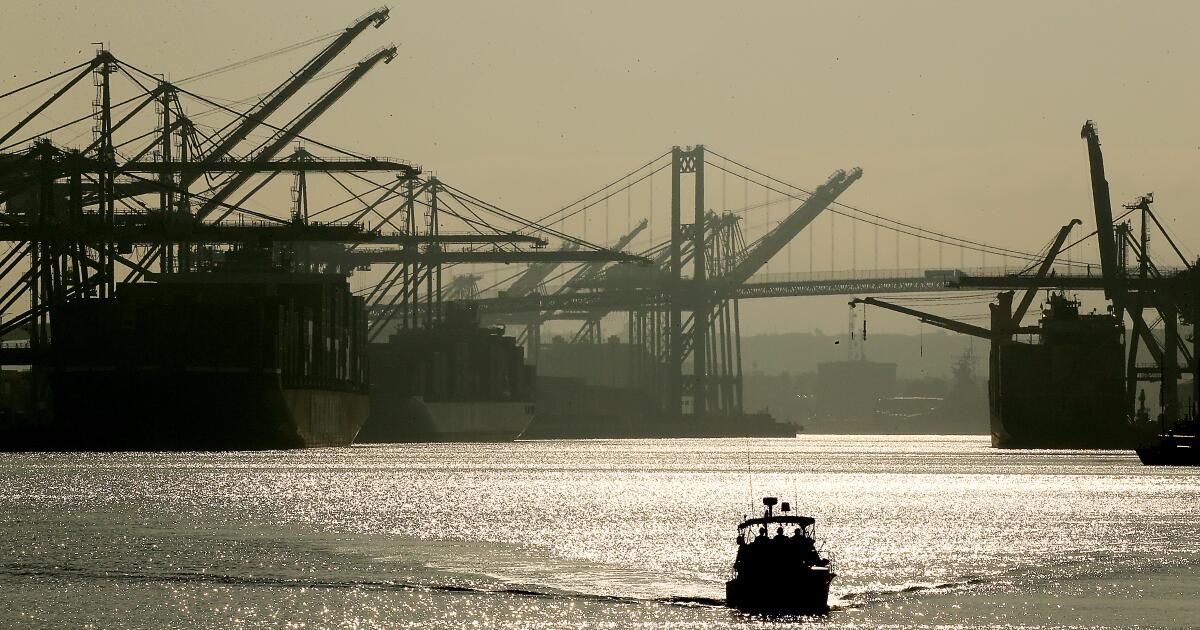The ports of Los Angeles and Long Beach reported significantly higher cargo traffic in January, part of a rebound since 2023, when cargo movement fell as labor problems pushed shippers to competing ports on the East and South coasts. Gulf.
The business boom can also be strong. Port officials have said they have heard from shippers that they are moving cargo to Southern California's massive shipping container complex, the largest in the country, to avoid attacks on shipping in the Red Sea and the resulting bottleneck. due to the drought in the Panama Canal.
Los Angeles docks had the second-busiest January on record, handling 855,652 containers of cargo, said Gene Seroka, executive director of the Port of Los Angeles. That represents an increase of almost 18% over the previous year and was only surpassed by the 865,595 containers in January 2022, when American consumers were still on their pandemic-era spending spree.
“The Port of Los Angeles is off to a great start,” Seroka said Wednesday on his monthly port operations conference call. “Retailers and manufacturers are preparing for increased consumer spending” and are bringing products to store shelves and spare parts for factories to respond.
“We are going to see a better year for freight flow than we saw in 2023. The American consumer continues to buy in the face of falling interest rates and higher inflation,” he said.
The Port of Long Beach handled 674,015 containers in January, up 17.5% from a year earlier.
“It was also our fifth consecutive month of increase,” said Mario Cordero, executive director of the Port of Long Beach. “In terms of business at the Port of Long Beach, everything is fine.”
The two ports, which handle nearly 40% of U.S. container imports from Asia, are a key economic driver in Southern California, home to an extensive cargo transportation and storage network that employs thousands of people.
Business boomed during the pandemic, causing a port jam that sent shippers to competing ports. Then, early last year, labor disruptions erupted as West Coast dockworkers grew frustrated with slow progress in contract negotiations and some shippers turned to East Coast and Gulf ports. After a tentative contractual agreement was reached in June, business began to return, port statistics show.
Now, ports can handle more cargo due to problems in two of the world's most important cargo routes: the Panama Canal and the Suez Canal.
The Panama Canal has experienced an unprecedented drought that has reduced water levels and caused a backup of cargo ships. Retailers and manufacturers use the canal as an alternative route to the eastern United States for goods from Asia, rather than taking the shorter sea route to Southern California and the rest of the trip by truck or train.
Due to attacks by Houthi rebels on ships in the Red Sea, Egypt's Suez Canal has lost major business, as cargo heading west from Asia towards Europe and the US east coast is being diverted , at great costs, around the Cape of Good Hope in Africa.
During his recent trip through Asia, Seroka said, “shippers are starting to tell me that they are starting to detour to the west coast of the United States basically because of the uncertainty. “It’s not an avalanche of cargo, but we do see a small increase due to these changes.”
But increased business at ports also brings increased pollution, and regional pressure to solve the problem has been increasing.
California Lt. Gov. Eleni Kounalakis, who joined Seroka at the monthly charging briefing, highlighted plans to improve infrastructure, including the Department of Energy's recent decision to award up to $1.2 billion to a public-public partnership. private company formed to lead California's bid to create a hydrogen center. Manufacturers have begun developing semi-trailers powered by hydrogen fuel cells, and shipping lines have announced moves to deploy cargo container ships powered by hydrogen or methanol.
Kounalakis said green hydrogen “is one of the very exciting areas that the United States and California are investing in with the great hope that it will be one of the important ways that we boost the transportation industry, particularly in the case of trucks.” heavy. and some of the equipment here in the ports. “That's why the selection of California as a hydrogen hub is very important and very exciting.”
Tyler Reeb, interim executive director of the Center for International Trade and Transportation at Cal State Long Beach, said there is “great potential in developing a hydrogen center to serve the Southern California supply chain. And the best place to start this effort is with the ports of San Pedro Bay, starting first with heavy transport, but there are also interesting applications of hydrogen for heavy locomotives and in the maritime transport sector.












